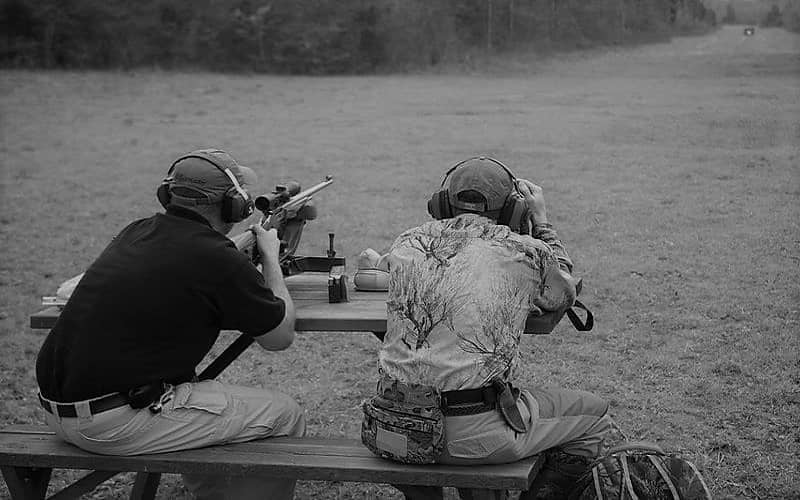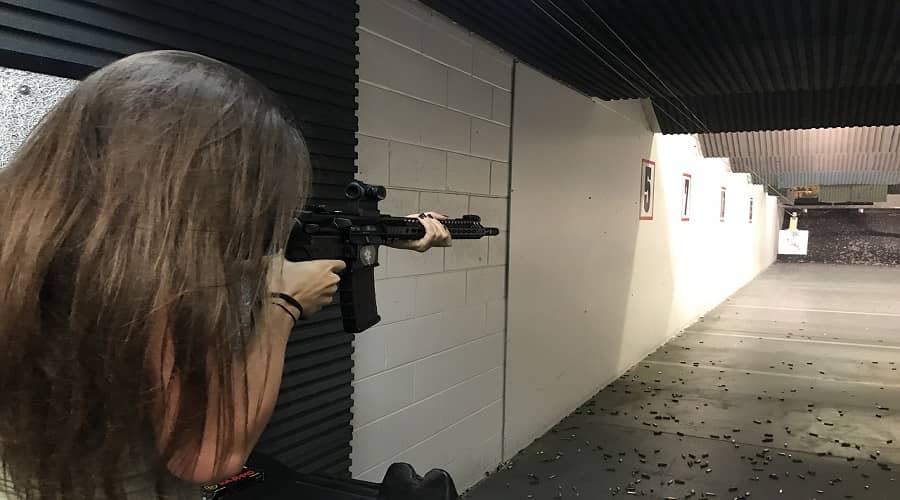How to Estimate Distance For Shooting
All archers, including the seasoned ones, agree that estimating the distance for the shooting is among the biggest challenges they face. That said, if you are a fan of 3D leagues and tournaments, you must have noticed that those who win most of the time must have excellent distance judging skills.
Even if you have the best bow and arrows, if you are poor at estimating distances, you won’t be able to hit the targets. So, if you have a dream of becoming a good archer, it would help if you developed distance estimation skills. Not only that, but you must also do it quickly, even in adverse situations.
Contents
Distance judging practice hints and tips

shootersden2
Some archers are naturally good at judging distances. Some do it with a near-laser beam accuracy. If you are in this category, then you are lucky. If not, take your time to practice. You must work on your depth perception so you can simply look at a distant object and accurately estimate how far it is.
Here are the proven tips on how you can estimate shooting distances.
Practice Estimating 20 Yards
The first step in learning how to estimate shooting distances is to master how far 20 yards is. This is important if you cannot judge distances naturally the way other archers do.
It is important for you as an archer to be able to estimate 20 yards correctly and consistently. Once you master 20 yards, you’ll be able to use it to get other distances by doubling, tripling, etc.
Twenty yards is best because it is not so near and not too far. This reduces the chance of making mistakes than when you use shorter distances like 5 yards or 10 yards, or longer distances like 40 yards, 50 yards, or more.
You can start by taking real measurements. From your standing point, measure 20 yards and put a mark. Go back to your starting point and observe your mark. Try to memorize how far the mark is.
Now, turn around and try to identify other objects you think might be 20 yards away. Once you identify them, measure to confirm your estimation. At first, you might not get it right, but with constant practice, your accuracy will improve.
The Walk-Up
The walk-up method works well after you’ve mastered the 20 yards position (or any other yardage you are comfortable with). To use this method to estimate a distance, pick an object between you and your target. The object you pick should be at a distance you had mastered earlier, say 10 yards or 20 yards.
You can use that distance repeatedly until you reach your target. Essentially, this method works on the principle that you take a long-distance, then you break it down into shorter distances.
For example, if your target is, say, 75 yards away, you can start by picking an object 20 yards away. This object will help you divide the distance into three 20 yards, making 60 yards. You can then estimate the remaining 15 yards to make it to 75 yards.
“Gut Feel”
This is the simplest method of estimating distances, but it will only work when you are gifted with the ability to judge depths. Archers with this ability can simply look at the target and make an accurate estimation of the distance. If you don’t have this gift, then you must practice.
To do so, pick objects at random and estimate their distances. Do not use any instruments in this estimation. You can then measure the distances, then compare them with your estimations. It may take you long to achieve reasonable estimates, but every endeavor requires some effort. Don’t give up.
Sizing Your Targets
Just like the “gut feel” method, sizing targets also depends on the ability of the archer to estimate distances by observing relative sizes. This method works well when shooting objects whose sizes you are familiar with, especially three-dimensional targets.
When you’ve shot at a certain 3D target several times, its relative size will allow you to gauge how far it is.
For example, if you’ve been hunting deer for several years, you’ll become an expert at judging how far a deer is from you before you shoot. This means, by constant practice, you'll be able to estimate target distances based on their relative sizes.
This method is difficult when dealing with moving targets like animals, but when you keep practicing, you’ll find it easier than the gut feel method.
You May Also Read – recurve bow deer hunting
The Travel Time of Arrows
The travel time of an arrow can help you estimate how far a target is. When you observe keenly the time the arrow leaves the bow up to the time it hits the target, you can estimate how far the arrow traveled.
This method can only work when you are shooting with other archers, and you aren’t the first to shoot. Observe other shooters from the moment their arrows leave their bows to the time you hear the arrow hitting the target.
Use that time to estimate the distance between the archer and the target. This will help you when it comes to your time to shoot.
You can practice this method on your own by shooting at targets at known distances and estimating how long the arrow takes to hit them. You don’t need accurate calculations; leave that to physists.
Conclusion
Being a good archer requires constant practice. Be dedicated to what you do and have some passion for it. Remember that, even if you are an expert at estimating distances, you can still miss your targets if you don’t practice.
Also, bear in mind that getting to know your bow and arrows plays a big role in shooting accurately. You can be good at using one bow, but when you change it for another, you’ll be surprised at how you miss your targets.
This will happen until you get to understand your new bow. To get an expert archer, you must practice, practice, and practice.

